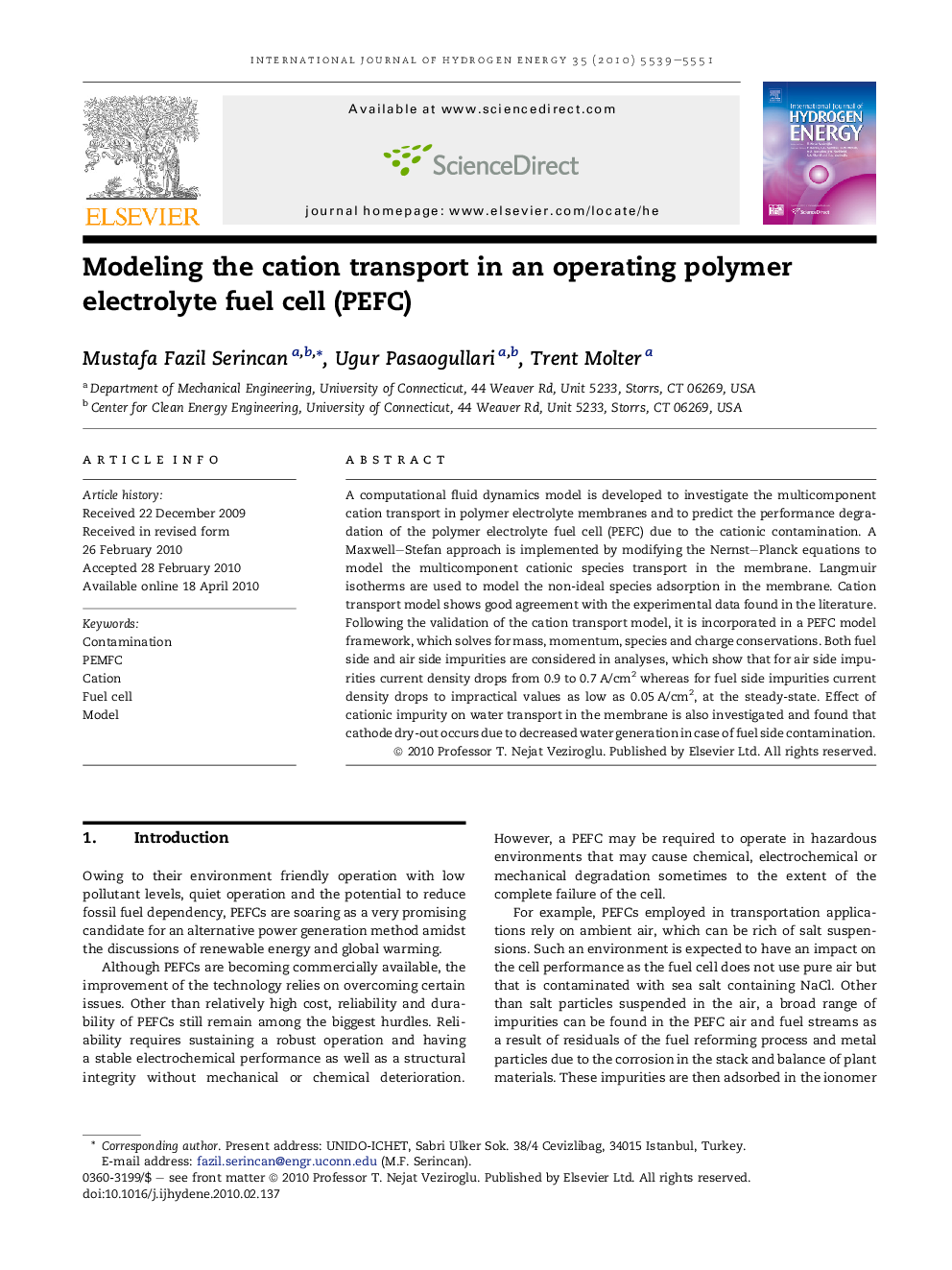| Article ID | Journal | Published Year | Pages | File Type |
|---|---|---|---|---|
| 1280576 | International Journal of Hydrogen Energy | 2010 | 13 Pages |
A computational fluid dynamics model is developed to investigate the multicomponent cation transport in polymer electrolyte membranes and to predict the performance degradation of the polymer electrolyte fuel cell (PEFC) due to the cationic contamination. A Maxwell–Stefan approach is implemented by modifying the Nernst–Planck equations to model the multicomponent cationic species transport in the membrane. Langmuir isotherms are used to model the non-ideal species adsorption in the membrane. Cation transport model shows good agreement with the experimental data found in the literature. Following the validation of the cation transport model, it is incorporated in a PEFC model framework, which solves for mass, momentum, species and charge conservations. Both fuel side and air side impurities are considered in analyses, which show that for air side impurities current density drops from 0.9 to 0.7 A/cm2 whereas for fuel side impurities current density drops to impractical values as low as 0.05 A/cm2, at the steady-state. Effect of cationic impurity on water transport in the membrane is also investigated and found that cathode dry-out occurs due to decreased water generation in case of fuel side contamination.
